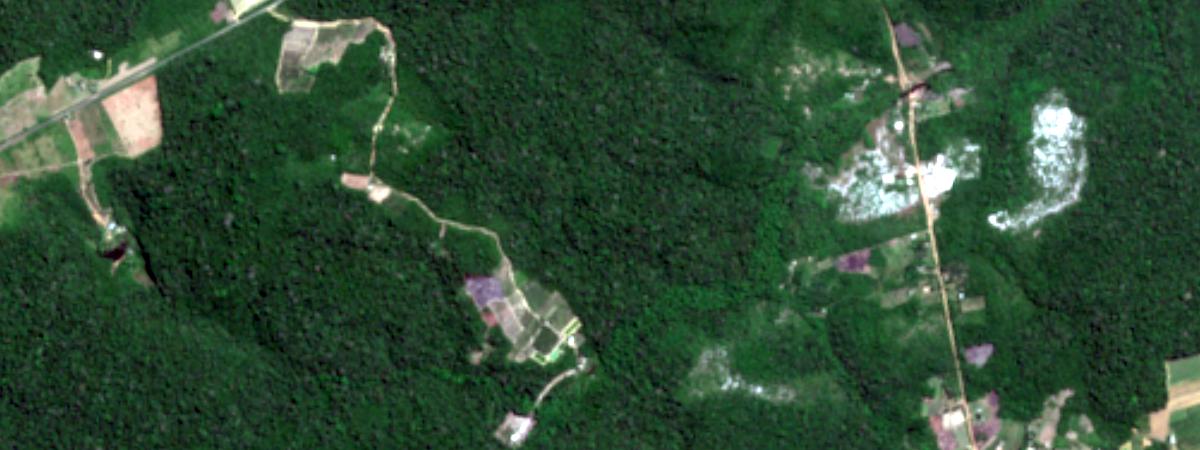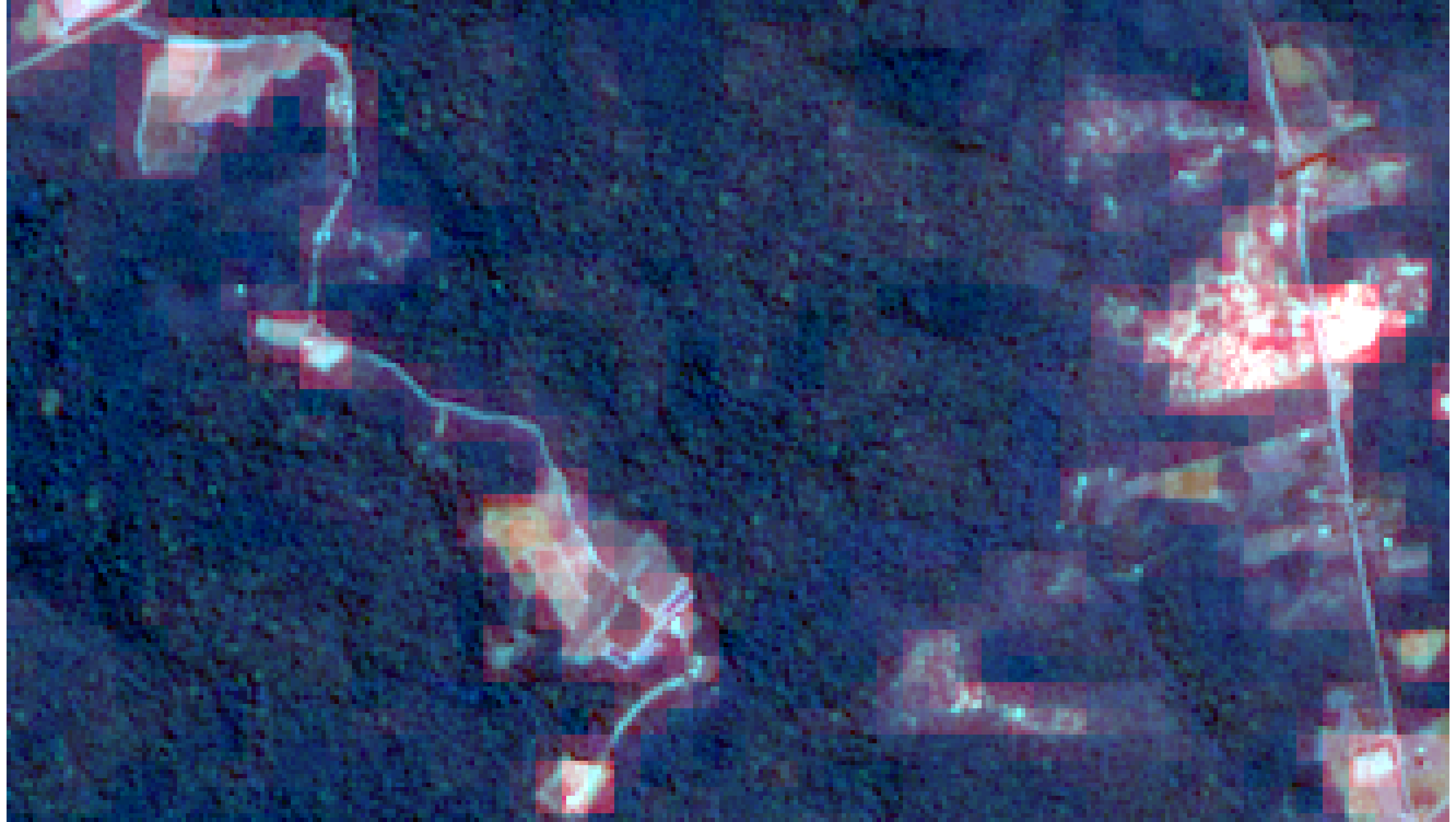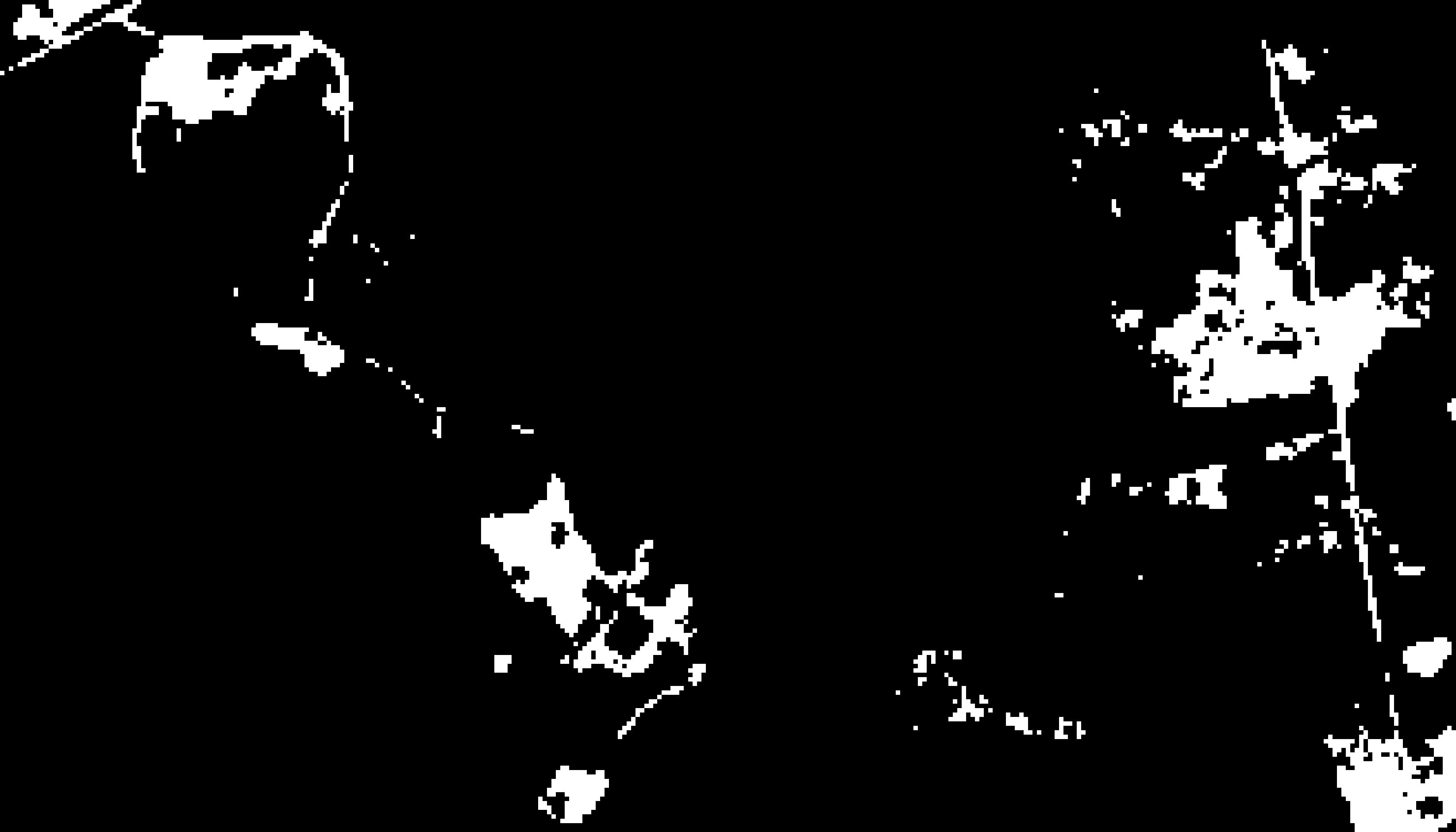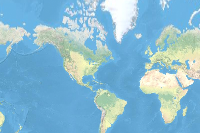Introduction
Deforestation around the world has reached a critical level, causing irreversible damage to environmental sustainability that is contributing to climate change around the world. Widespread forest fires, from the Amazon Basin in Brazil, to the west coast of the United States, are raging all year-round. This notebook will allow us to detect deforested areas in the Brazilian Amazon rainforest, using satellite imagery.
Imports
%matplotlib inline
import pandas as pd
from datetime import datetime
from IPython.display import Image
from IPython.display import HTML
import matplotlib.pyplot as plt
from sklearn.preprocessing import MinMaxScaler
from datetime import datetime as dt
import arcgis
from arcgis.gis import GIS
from arcgis.learn import MLModel, prepare_tabulardata
from arcgis.raster import Raster
from fastai.vision import *Connecting to ArcGIS
gis = GIS("home")
gis_enterp = GIS("https://pythonapi.playground.esri.com/portal", "arcgis_python", "amazing_arcgis_123")Accessing & Visualizing datasets
Here, we use Sentinel-2 imagery, which has a high resolution of 10m and 13 bands. This imagery is accessed from the ArcGIS Enterprise portal, where it is sourced from the AWS collection.
# get image
s2 = gis.content.get('fd61b9e0c69c4e14bebd50a9a968348c')
sentinel = s2.layers[0]
s2Data Preparation
Define Area of Interest in the Amazon
The area of interest is defined using the four latitude and longitude values from a certain region of the Amazon rainforest where a considerable area of forest has been deforested, as can be seen from the images above.
# extent in 3857 for amazon rainforest
amazon_extent = {
"xmin": -6589488.51,
"ymin": -325145.08,
"xmax": -6586199.09,
"ymax": -327024.74,
"spatialReference": {"wkid": 3857}
}Here, we select all the scenes from the sentinel imagery containing the area of interest for our study.
# The respective scene having the above area is selected
selected = sentinel.filter_by(where="(Category = 1) AND (cloudcover <=0.05)",
geometry=arcgis.geometry.filters.intersects(amazon_extent))
df = selected.query(out_fields="AcquisitionDate, GroupName, CloudCover, DayOfYear",
order_by_fields="AcquisitionDate").sdf
df['AcquisitionDate'] = pd.to_datetime(df['acquisitiondate'], unit='ms')
df| objectid | acquisitiondate | groupname | cloudcover | dayofyear | SHAPE | AcquisitionDate | |
|---|---|---|---|---|---|---|---|
| 0 | 2459960 | 2020-06-21 14:23:37 | 20200621T142337_21MTS_0 | 0.0359 | 173 | {"rings": [[[-6535992.3057, -302418.3759999983... | 2020-06-21 14:23:37 |
| 1 | 3343176 | 2020-07-06 14:23:39 | 20200706T142339_21MTS_0 | 0.0037 | 188 | {"rings": [[[-6535992.3057, -302418.3759999983... | 2020-07-06 14:23:39 |
| 2 | 3620096 | 2020-07-21 14:23:37 | 20200721T142336_21MTS_0 | 0.0091 | 203 | {"rings": [[[-6535992.3057, -302418.3759999983... | 2020-07-21 14:23:37 |
| 3 | 3596177 | 2020-07-26 14:23:40 | 20200726T142340_21MTS_0 | 0.0020 | 208 | {"rings": [[[-6535992.3057, -302418.3759999983... | 2020-07-26 14:23:40 |
| 4 | 1584818 | 2020-07-31 14:23:38 | 20200731T142337_21MTS_0 | 0.0000 | 213 | {"rings": [[[-6535992.3057, -302418.3759999983... | 2020-07-31 14:23:38 |
| 5 | 776568 | 2020-08-10 14:23:38 | 20200810T142338_21MTS_0 | 0.0039 | 223 | {"rings": [[[-6535992.3057, -302418.3759999983... | 2020-08-10 14:23:38 |
| 6 | 556656 | 2020-08-15 14:23:41 | 20200815T142340_21MTS_0 | 0.0087 | 228 | {"rings": [[[-6535992.3057, -302418.3759999983... | 2020-08-15 14:23:41 |
| 7 | 1551821 | 2020-09-04 14:23:39 | 20200904T142339_21MTS_0 | 0.0421 | 248 | {"rings": [[[-6535992.3057, -302418.3759999983... | 2020-09-04 14:23:39 |
| 8 | 224997 | 2020-09-19 14:23:37 | 20200919T142336_21MTS_0 | 0.0160 | 263 | {"rings": [[[-6535992.3057, -302418.3759999983... | 2020-09-19 14:23:37 |
The satellite imagery with the least cloud cover is selected and visualized for further processing.
# The scene is selected with the least cloud cover and extracted using the amazon extent
amazon_scene = sentinel.filter_by('OBJECTID=1584818')
amazon_scene.extent = amazon_extent
amazon_scene
In the above scene, the brown patches are the deforested areas that are to be identified. This selected scene is then published to the portal.
# publish the scene to the portal
amazon_scene.save('amazon_scene'+ str(dt.now().microsecond), gis=gis_enterp)The published imagery of the Amazon rainforest is exported back to an image file on disk for further processing.
raster_amazon_13bands = Raster("https://pythonapi.playground.esri.com/ra/rest/services/Hosted/amazon_scene_may26/ImageServer",
gis=gis_enterp,
engine="image_server")# visualizing the image
raster_amazon_13bands.export_image(size=[3330,1880])
Model Building
The first part of model building consists of defining the preprocessors, which will be used to scale the bands before feeding them into the model. The band names use the conventional naming method of the imagery name with an id number appended at the end as follows:
Sentinel-2 imagery has 13 bands, of which 4 bands, namely the blue, green, red, and near infrared bands, we will use here for modelling. These bands work well for differentiating green forested areas from barren land. The band information, along with the band name and their respective ids, are obtained for selecting the required bands.
# get the band names and their ids, sentinel images have 13 bands
pd.DataFrame(amazon_scene.key_properties()['BandProperties'])| BandName | WavelengthMin | WavelengthMax | |
|---|---|---|---|
| 0 | B1_Aerosols | 433 | 453 |
| 1 | B2_Blue | 458 | 522 |
| 2 | B3_Green | 543 | 577 |
| 3 | B4_Red | 650 | 680 |
| 4 | B5_RedEdge | 698 | 712 |
| 5 | B6_RedEdge | 733 | 747 |
| 6 | B7_RedEdge | 773 | 793 |
| 7 | B8_NearInfraRed | 784 | 899 |
| 8 | B8A_NarrowNIR | 855 | 875 |
| 9 | B9_WaterVapour | 935 | 955 |
| 10 | B10_Cirrus | 1360 | 1390 |
| 11 | B11_ShortWaveInfraRed | 1565 | 1655 |
| 12 | B12_ShortWaveInfraRed | 2100 | 2280 |
# get the imagery name to define the band names
raster_amazon_13bands.name'Hosted/amazon_scene_may26'
Here, the imagery name is 'Hosted/amazon_scene_april9'. Subsequently, the names of the blue, green, red, and near infrared bands would be 'Hosted/amazon_scene_april9_1', 'Hosted/amazon_scene_april9_2', 'Hosted/amazon_scene_april9_3', 'Hosted/amazon_scene_april9_7' respectively. These bands will be used for defining the preprocessors.
Data Pre-processing
from sklearn.preprocessing import MinMaxScalerThe four bands are listed in the preprocessors for scaling, with the last item as the designated scaler as follows.
preprocessors = [('Hosted/amazon_scene_may26_1',
'Hosted/amazon_scene_may26_2',
'Hosted/amazon_scene_may26_3',
'Hosted/amazon_scene_may26_7', MinMaxScaler())]Here, in the explanatory raster, we pass the name of the explanatory raster and the selected bands by their id's — 1 for blue, 2 for green, 3 for red, and 7 for NIR, as follows:
# Data is prepared for the MLModel using the selected scene and the preprocessors
data = prepare_tabulardata(explanatory_rasters=[(raster_amazon_13bands,(1,2,3,7))], preprocessors=preprocessors)# visualization of the data to be processed by the model
data.show_batch()| Hosted/amazon_scene_may26_1 | Hosted/amazon_scene_may26_2 | Hosted/amazon_scene_may26_3 | Hosted/amazon_scene_may26_7 | |
|---|---|---|---|---|
| 647 | 820 | 695 | 406 | 2508 |
| 5345 | 1144 | 1155 | 1181 | 2303 |
| 28764 | 818 | 707 | 389 | 2901 |
| 42042 | 1201 | 1252 | 1257 | 2596 |
| 61515 | 802 | 700 | 388 | 2410 |
Model Initialization
Once the data is prepared, an unsupervised model of k-means clustering from scikit-learn is used for clustering the pixels into deforested areas and forested areas. The clustering model is passed inside MLModel as follows, with the number of clusters set as three in the parameters.
from arcgis.learn import MLModel, prepare_tabulardatamodel = MLModel(data, 'sklearn.cluster.KMeans', n_clusters=3, init='k-means++', random_state=43)Model Training
Now the model is ready to be trained, and will label the pixels as being one of three classes, either forested, slightly deforested, or highly deforested.
# here model is trained which would label the pixels into the designated classes
model.fit()# the labelled pixels can be visualized as follows with the last column returning the predicted labels by the model
model.show_results()| Hosted/amazon_scene_may26_1 | Hosted/amazon_scene_may26_2 | Hosted/amazon_scene_may26_3 | Hosted/amazon_scene_may26_7 | prediction_results | |
|---|---|---|---|---|---|
| 25429 | 811 | 709 | 391 | 3294 | 2 |
| 30113 | 829 | 730 | 397 | 3261 | 2 |
| 31345 | 835 | 767 | 419 | 2783 | 2 |
| 32640 | 986 | 1015 | 780 | 3028 | 2 |
| 55783 | 815 | 708 | 421 | 2958 | 2 |
Deforestation Clusters Prediction
Next, the trained model is used to predict clusters within the entire selected scene of the Amazon rainforest. This is passed as the explanatory raster, with the prediction type as raster and a local path provided for output. The output_layer_name parameter can also be used for publishing.
pred_new = model.predict(explanatory_rasters=[raster_amazon_13bands],
prediction_type='raster',
output_layer_name=('deforest_predicted2'+str(dt.now().microsecond)),
output_raster_path=r"/tmp/result5.tif")The Published Item ID is : 3df30cd12a48421dade893490c967c62
Result Visualization
The resulting raster with the predicted classes of deforested areas and forested areas is now read back for visualization. The predicted local raster can be accessed here.
amazon_predict = gis.content.get('b81b89aac4cd4e08bcd7cd400fac558f')
amazon_predictimport os, zipfilefilepath_new = amazon_predict.download(file_name=amazon_predict.name)
with zipfile.ZipFile(filepath_new, 'r') as zip_ref:
zip_ref.extractall(Path(filepath_new).parent)
output_path = Path(os.path.join(os.path.splitext(filepath_new)[0]))
output_path = os.path.join(output_path, "result5.tif") raster_predict = Raster(output_path)raster_predict.export_image(size=[3290,1880])
The model has correctly labelled the deforested areas in white, distinguishing them from the rest of the forested areas in black.
The boundaries of the detected deforested areas could be further extracted into polygons using the convert raster to feature function.
Conclusion
In this sample notebook we were able to detect deforestation in the Amazon rainforest using the unsupervised model of k-means clustering on satellite imagery. This was implemented via the MLModel framework, which exhibited the application of several unsupervised models from the scikit learn library on raster imagery.
Summary of methods used
| Method | Description | Examples |
|---|---|---|
| prepare_tabulardata | prepare data including imputation, normalization and train-test split | prepare data ready for fitting a MLModel |
| MLModel() | select the ML algorithm to be used for fitting | any supervised and unsupervised models from scikit learn can be used |
| model.fit() | train a model | training the unsupervised model with suitable input |
| model.score() | find the appropriate model metric of the trained model | returns suitable value after training the unsupervised MLModel |
| model.predict() | predict on a test set | predict values using the trained models on the trained data itself |
Data resources
| Dataset | Source | Link |
|---|---|---|
| sat imagery | sentinel2 | https://registry.opendata.aws/sentinel-2/ |


